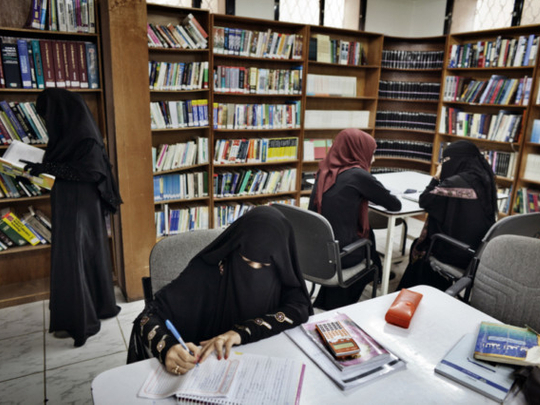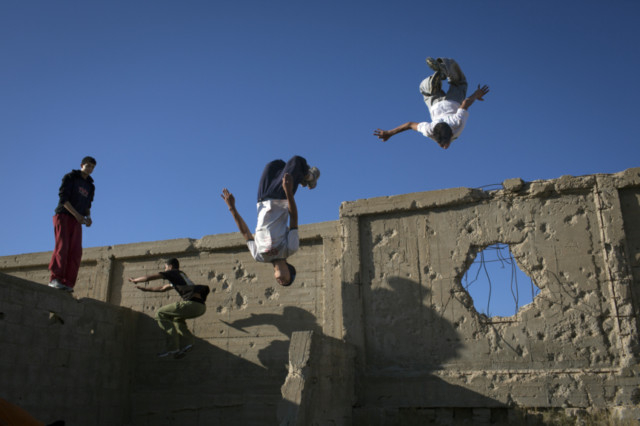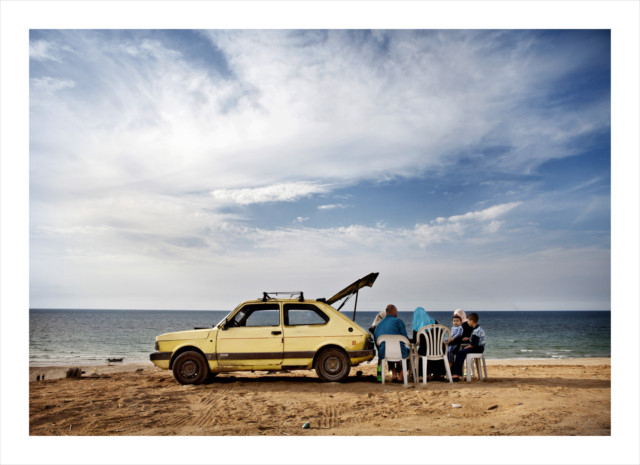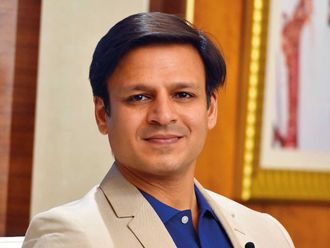
Canada-based Tamara Abdul Hadi is of Iraqi origin. Myriam Abdul Aziz, who is of Egyptian heritage, is French and splits her time between New York and Cairo. Palestinian Laura Boushnak was born in Kuwait, educated in Lebanon and works around the Middle East.
And Tanya Habjouqa is a Jordanian educated in the United States and now lives in East Jerusalem. What connects these women from diverse backgrounds is their love for photography and their desire to tell stories about the Arab world through their pictures.
The four women are award-winning photojournalists, whose work is published in leading international publications. And they have come together to form an Arab women’s photography collective called Rawiya, which means “she who tells a story”.
Although they work on independent projects in different countries, they pool their resources to hold joint exhibitions that draw attention to various socio-political issues across the Middle East. Their first exhibition in Dubai, titled “Rawiya | She Who Tells a Story”, offers a sensitive, compassionate, insider’s view of life in a region that is mostly associated with turmoil and conflict.
Boushnak is focused on the issue of women’s education across the Arab world. Her ongoing project, “I Read I Write”, has taken her to various countries to document issues such as adult illiteracy in Egypt, educational reforms in Kuwait and the fight of educated women to maintain their rights in the changed political scenario in Tunisia.
Her photographs in this show are from Yemen, where access to education is a major issue for women. Boushnak’s subjects in this series are all women who are the first in their families to go to university.
And she has juxtaposed their portraits with handwritten notes by the women about their achievements, aspirations, and the challenges they face in a conservative society. The pictures speak eloquently about their conviction that education is the key to improving their lives and their resolve to ensure a better life for their daughters.
“My aim with this project is to focus on stories of success. It was inspiring to meet women who have battled the most difficult circumstances to educate themselves to fulfil their dreams of becoming financially independent and giving their children a better life. And I hope their stories will inspire other women in the region,” Boushnak says.
In her series, “Cairo Dancers”, Abdul Aziz draws attention to the dying art of belly dancing in Egypt and the various factors that are preventing Egyptian women from continuing this tradition. Her pictures of belly dancers striking enticing poses have an old-world charm and a sense of pathos, which is heightened by the captions that express what dance means to them.
“When I was growing up, belly dancers used to be icons. My pictures are inspired by the way they were portrayed as stars in the black-and-white films of those times. But today their art is disappearing and they are an endangered species, on the road to extinction. I feel this is an important story to tell because belly dancing is an internationally recognised art that was born in Egypt and an ugly combination of economic and socio-religious factors is robbing the country of one of its greatest artistic achievements,” she says.
For her project, titled “Ramallah 2011”, Abdul Hadi used a novel approach. She set up a camera in a refugee camp in Ramallah and invited residents to take their own photographs.
The resulting images of curious children, smiling teenage boys, self-conscious older men and a few bashful women challenge static notions of documentation by empowering the subjects to choose how they want to be depicted and setting up a direct communication between them and viewers.
“The lives of people living in marginalised communities can be tremendously under-represented, and their stories often remain undocumented. This project goes beyond the idea of people taking their own photographs; it is an interactive exercise where people have the ability to control their own image and, for once, decide how to represent themselves,” she says.
Habjouqa, who relocated from the US to occupied East Jerusalem in 2009, offers a very personal perspective on life in the Occupied Territories through her photographs of everyday activities. The series, titled “Occupied Pleasures”, includes pictures of Palestinian families on picnics, children playing on the beach, men swimming, young girls preparing for a party and women doing yoga.
“Media coverage of the occupied Palestinian territory is certainly not lacking; however, Palestinians are often misrepresented and it suffers from a loss of a focus on the individual. Because they are typically viewed as proponents or victims of violence, their human narrative is often denied.
This series was inspired by the determination of Palestinians to not be denied the small pleasures that are so difficult to enjoy under occupation. It captures moments of respite for people coping with limited freedom of movement. My aim is to reveal quirky and often modest moments of fun and with that the fabric of a society mostly seen through the lens of hard news,” she says.
Jyoti Kalsi is an arts enthusiast based in Dubai.
“Rawiya | She Who Tells a Story” will run at Gulf Photo Plus, Al Quoz, until October 16.














